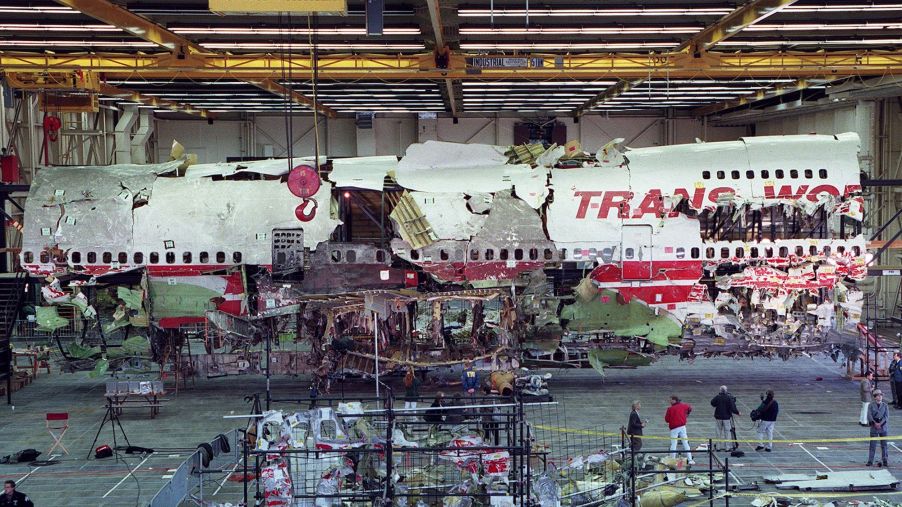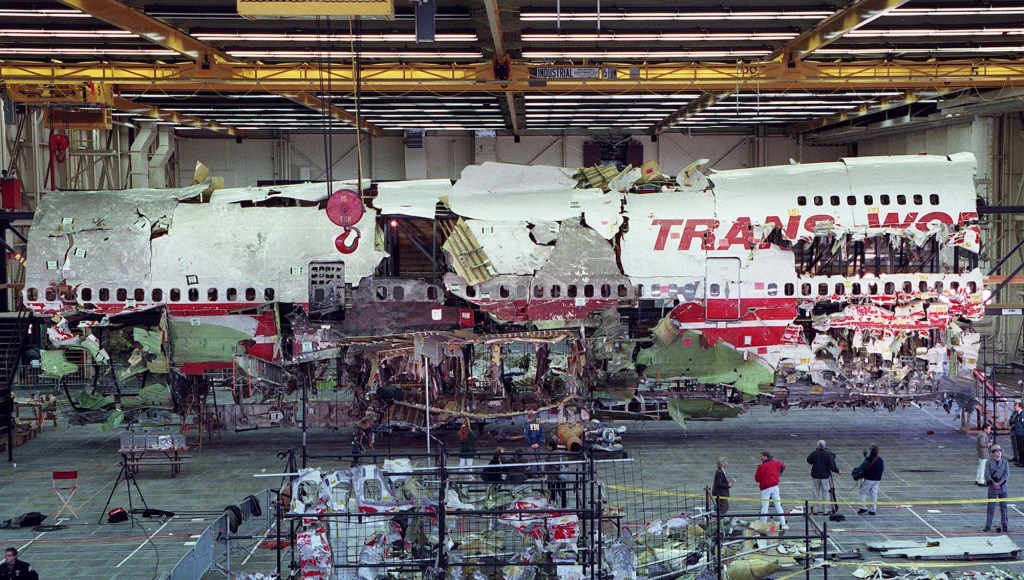
TWA Flight 800 Crash Wreckage Will Soon Be Destroyed After 25 Years
On July 17, 1996, the crash of TWA Flight 800 forever changed the aviation industry. In the years following the explosion, the NTSB carefully reconstructed the doomed Boeing 747 to provide training and prevent future accidents. But after 25 years, the use of the reconstructed aircraft will soon come to an end. The NTSB plans to decommission and destroy the remains of the wreckage.
What caused the crash of TWA Flight 800?

To this day, the TWA Flight 800 crash remains one of the most notorious aircraft accidents in U.S. history. The Washington Post reported that the plane crashed shortly after takeoff when it exploded over the Atlantic Ocean during a flight from New York to Paris.
All 230 passengers and crew members aboard the flight died. After four years of investigation, the National Transportation Safety Board determined the cause was an explosion in the plane’s center fuel tank when a spark ignited a flammable mix of fuel and air.
The NTSB’s conclusion put to rest a conspiracy theory that the explosion resulted from a terrorist attack similar to the one that took down Pan Am Flight 103 over Lockerbie, Scotland, in 1988.
The TWA Flight 800 wreckage has helped with training and accident prevention
The NTSB has housed the wreckage from TWA Flight 800 in a 30,000-square-foot hangar in Ashburn, Virginia, for more than 20 years. Experts carefully reconstructed it from nearly 1,600 pieces gathered from the Atlantic Ocean and reassembled over many months, CNN reports. The reconstruction constitutes more than 95% of the original airplane.
In reconstructing the aircraft, officials had to agree it would be used solely for training purposes rather than as a memorial open to the public, CNN explains.
The NTSB’s investigation prompted many changes in the aviation industry. For example, in 2004, the Federal Aviation Administration ordered airplanes to be retrofitted with systems designed to reduce the volatility of the mix of air and fuel in tanks. According to The Washington Post, the NTSB called this decision “a transformational improvement in aviation safety.”
In addition, the investigation prompted the FAA to create a system to address aging aircraft systems, such as wiring, and a formal program to support families of crash victims.
But after more than two decades of use, the wreckage of TWA Flight 800 will be destroyed by year’s end. This is partly because the NTSB’s lease on the hangar will soon expire. Any pieces remaining after the aircraft’s destruction will be carefully scrubbed of identifying marks to prevent them from getting into the wrong hands and being sold on the black market.
What is the NTSB, and what does it do?
The NTSB has been improving transportation safety since 1967. Though we tend to hear about this U.S. government agency most when airplane accidents occur, the NTSB investigates crashes related to transportation of all types, including highway, rail, and pipeline.
As a result of its hard investigatory work, the agency has issued some 15,000 safety recommendations in its lifetime. Many of our most famous safety regulations stem from NTSB recommendations. These include adding aircraft floor-level escape lighting, requiring emergency position-beacons in marine vessels, raising the legal drinking age to 21, and lowering the legal blood alcohol content in drivers to .05.
NTSB investigations are thorough and painstaking. They include gathering physical evidence, such as the wreckage of TWA Flight 800, taking photos and videos, conducting interviews with witnesses, and carrying out complex lab testing. Without the NTSB’s hard work, air travel would be less safe than it is today.


